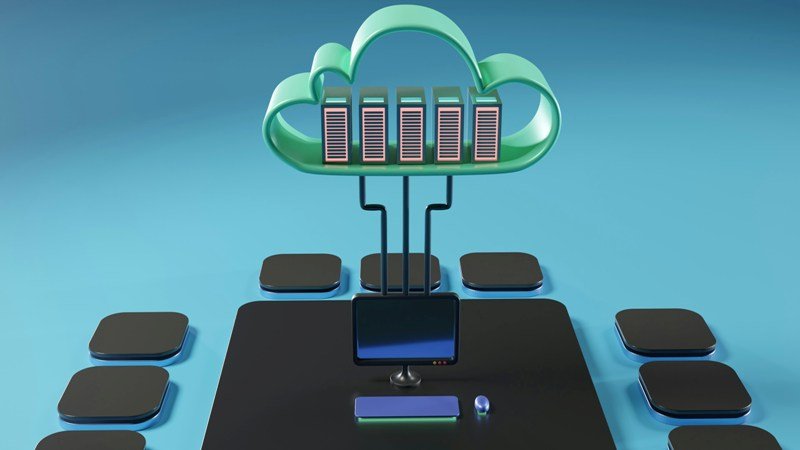
Cloud infrastructure entitlement management (CIEM) is a security process that helps security teams analyze and manage identities, access rights, privileges, and permissions in cloud environments. Its main goal is to mitigate the risk that comes from the unintentional and unchecked granting of excessive permissions to cloud resources.
Cloud infrastructure entitlements comprise the various permissions granted to entities to access cloud resources. In a multi-cloud environment operating at the scale of thousands of resources, managing and keeping track of an enterprise’s cloud infrastructure entitlements is an incredibly complex task.
Cloud providers operate with a shared responsibility model. With IaaS offerings, the cloud provider makes available services and storage and guarantees the physical security of its data centers. However, the user of the IaaS offering is responsible for security, establishing who (or what) can and cannot access those infrastructure resources.
CIEM allows security teams and organizations to use advanced techniques, including machine learning, to analyze effective access in cloud environments, monitor and right-size permissions, help detect accidental exposure and generate remediation recommendations.
This is done by applying the principle of least privilege, granting a user (or any entity) the minimum amount of permissions necessary to perform their role. With this approach, CIEM solutions start from a posture that avoids the dangers of excessive permissions.
CIEM also unifies security terminology and usage across all clouds, which reduces the need for teams to switch context on multiple cloud providers. Lastly, many CIEM solutions use machine learning to analyze access records and configurations to determine an enterprise’s potential access risks. Through this, a CIEM solution can help identify excessive entitlements and mitigate the risk of a security breach.
Identity and access management (IAM): Centralized access management with CIEM ensures only authorized users and applications have access to sensitive data and services. These policies and roles determine who in your organization can access cloud workloads; what files they can access; and when, where, and why they can access it.
Principle of least privilege (POLP): Enforcing POLP with CIEM ensures users and applications only have the minimum level of access needed to perform their tasks. By enforcing POLP to minimize access rights, organizations can reduce their risk of data breaches and unauthorized access.
Visibility, auditing and remediation: CIEM enables visibility into user activity across all cloud environments and can detect suspicious or abnormal behavior. This is often done via user entity behavior analytics (UEBA) or machine learning. Security teams can use generated recommendations and remediation steps to reduce access and revoke unused permissions.
Identity governance: Identity governance mitigates entitlement risk by specifying which entitlements apply to each cloud entity, whether human or non-human.
Centralized management: A dashboard is used to provide centralized visibility and cloud entitlement management. This control center allows your IT system to seamlessly manage multi-cloud environments.
Compliance: Enhanced access and control from CIEM visibility, control and auditing helps security teams and organizations comply with security regulations including GDPR, HIPAA and CCPA
Improved identity and access management: In today’s cloud environments, people or processes might provision or deprovision resources at any given moment. Managing access to those resources requires a dynamic approach that CIEM solutions provide. Monitoring access to those ephemeral resources is similarly complex.
Optimized access to cloud resources: With a manual or careless approach to permissions, many enterprises err on the side of granting access in a manner that is too coarse. Consider the example of attaching IAM policies to a new member of the engineering team. Perhaps to avoid blocking the new member from performing tasks or to prevent the new member from repeatedly needing to ask for more permissions, the enterprise errs on giving that member excessive permissions to perform all sorts of actions — including actions not related to their tasks or responsibilities. This granting of excessive permissions significantly raises the risk of a security breach. CIEM solutions make it easy for IT teams to provide only the necessary permissions for each user to operate efficiently.
Improved multicloud entitlement visibility: Cloud infrastructure access is not as simple as users accessing resources. Resources that may need to be accessed include:
Reduced complexity and improved security posture: Many enterprises adopt a multi-cloud approach, choosing to host their resources in different clouds because of cost, availability, or other factors. This leaves enterprises without a single, unified approach to managing permissions across all of their cloud resources. With a CIEM solution, IT teams can easily manage entitlements across multi-cloud environments.
Compliance and audit readiness: CIEM security solutions constantly ensure sensitive data within the cloud is managed with care and in a compliant manner through the automation of identity access management across multi-cloud environments. Many solutions follow cloud security frameworks put in place by local governments or industry regulators.
Automatic detection and remediation: CIEM solutions are designed to reduce your attack surfaces and minimize risk by keeping an inventory of all cloud entitlements, automatically remediating misconfigured entitlements, enforcing least privilege access, and implementing congruent guardrails.
Click here to Contact us for Free Quote.